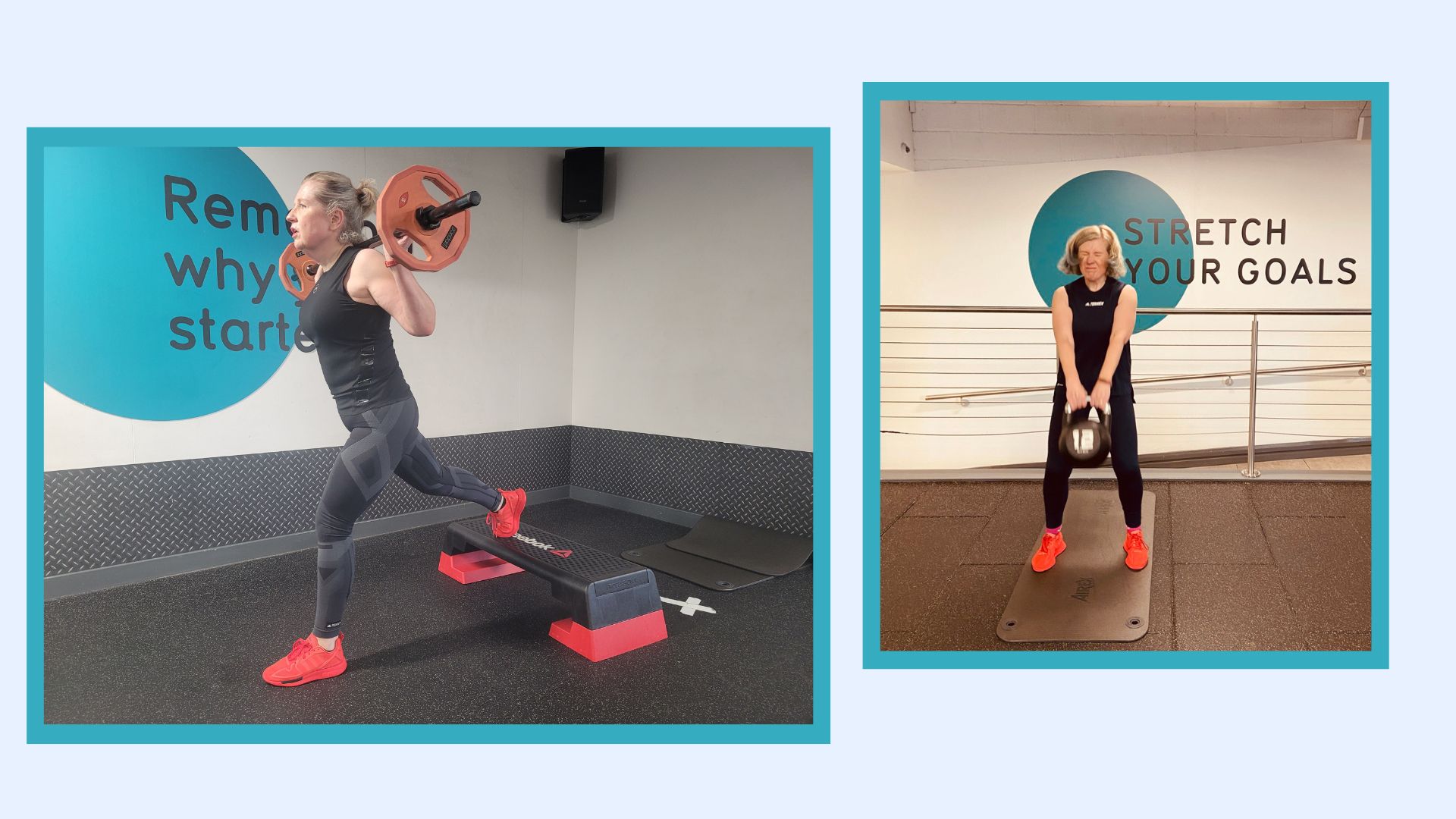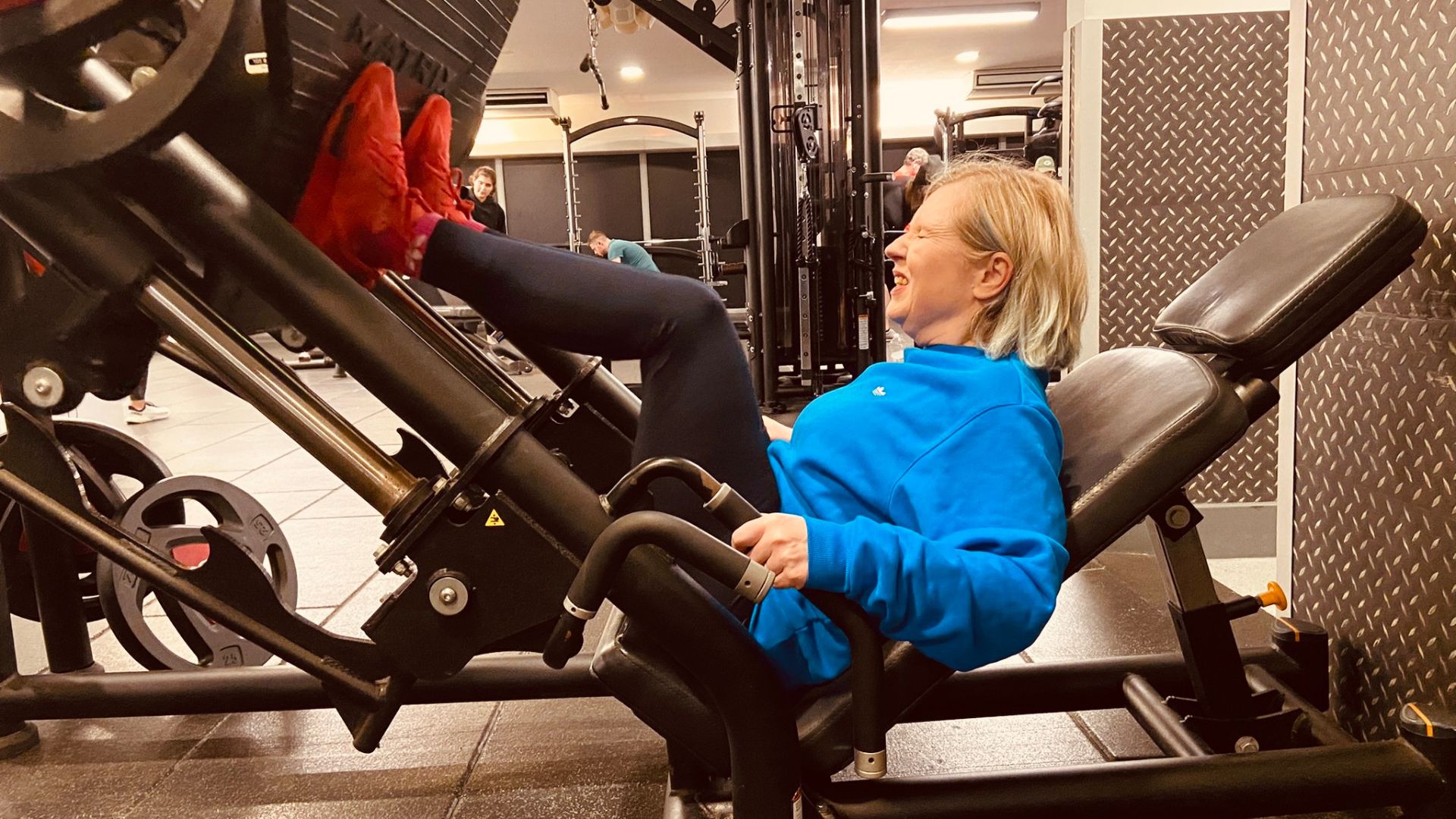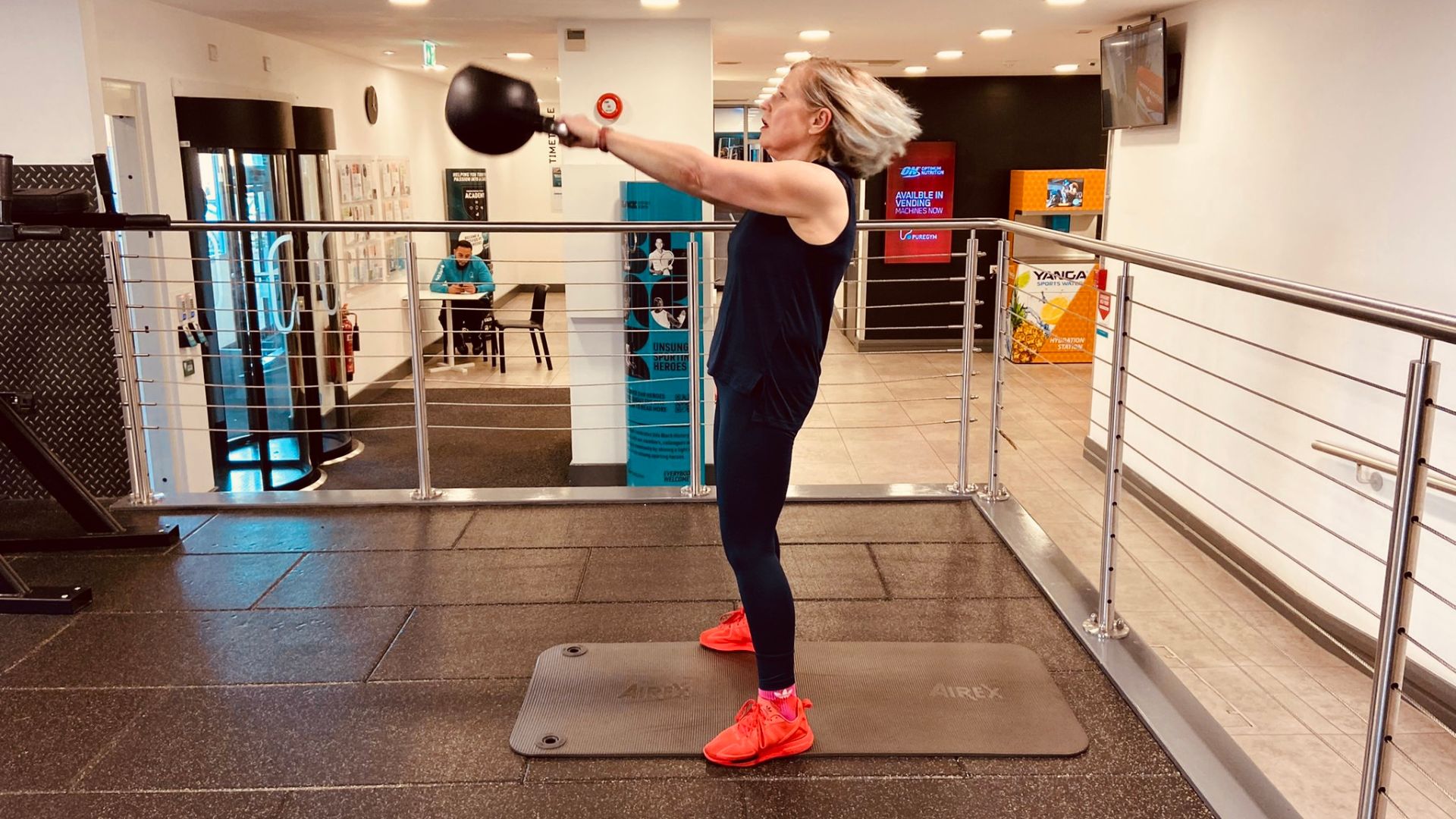I started weightlifting in my 50s and I'm fitter than ever - here's how I did it
Joanne Mallon reveals how to start weightlifting as a beginner, whether you've got a gym or not


If you'd asked me about how to start weightlifting when I was younger, I would have looked at you confused. As a child, I was anything but sporty. Instead, I was the awkward girl who got picked last for games. As an adult, I joined a gym in my 40s and threw myself haphazardly into various fitness classes - still the awkward girl at heart. I was getting fitter but I wasn't particularly strong. Up until I was 50, I couldn't manage a full press-up.
And yet, on my 53rd birthday, I went to the gym and did 53 full, up-on-the-toes press-ups, ran for 5.3k on the treadmill, and then I did a 53-second plan with a 5kg weight on my back. Since I took up weightlifting, I'm stronger than I've ever been.
Weightlifting, also known as weight training, strength training, or resistance training, is a sport that can be suited to anyone's needs. You can even do Pilates for strength training. It offers significant mental and physical health benefits too, particularly for those approaching menopause. From my experience, this is how to start weightlifting.
How to start weightlifting
1. Find out what you like
In my late 40s, after an intense period of computer-based desk work, I started to get aches in my right shoulder - the first signs of repetitive strain injury (RSI). I was advised to start strengthening my arm muscles - and to not spend so much time on the computer - so I began going to lunchtime Pump classes at my gym.
At my gym, Pump classes involve lifting lighter weights repeatedly to music. I was apprehensive at first but it turned out to be a friendly class full of fellow women over 40 getting strong together. Plus, I enjoyed it more than any other class I'd done, especially once I discovered that you only need to lift weights twice a week to build muscle.
2. Learn what you enjoy
Chucking around big heavy lumps of metal is surprisingly satisfying, I discovered, particularly if you're at a point in life where you're being bombarded with messages that it's all downhill from here, as I was. There's a real connection between feeling physically strong and feeling mentally strong, and I found that the classes benefitted my mental health as much as my physical health. When something makes you feel good, you tend to want to do it more.
Turning 50 a couple of months later really focused my thoughts. I went on a mission to get as fit as possible for the next decade, given the changes that would be coming my way. As personal trainer Rachael Sacerdoti explains, "It's been found that muscle mass begins to decline around the age of 35, with an even faster drop at 65."
Sign up for the woman&home newsletter
Sign up to our free daily email for the latest royal and entertainment news, interesting opinion, expert advice on styling and beauty trends, and no-nonsense guides to the health and wellness questions you want answered.
This is a problem for several reasons, says Sacerdoti, who is also the creator of the It's So Simple Method. "The more muscle mass we have, the faster our metabolism will be, helping to avoid putting on additional fat. Stronger muscles also improve overall strength, mobility, range of motion, and balance, all of which help to prevent injury as we age."
It's really a case of use it or lose it and once you lose muscle mass, it's incredibly hard to get back. As a busy person, I could see that weightlifting was going to be the best use of my time. It's the ultimate multi-tasker: every time I lift a dumbbell, I'm decreasing my risk of osteoporosis, building muscle, increasing my metabolism, and improving my physical and mental health all at once.
3. Focus on technique
Although I knew the basics of weightlifting from doing Pump classes, I realized I need to learn more. Strength training is similar to yoga or Pilates, in that there's a little theory to learn to help you do it right.
"Technique is always your number one priority," says Julia Buckley, a trainer who's been working with women for over 10 years and runs an online gym community, says, as a poor weightlifting technique could have disastrous consequences for your back or knees.
However, as a hardcore introvert, it took me a long time to actually speak to anyone in the real world about this. Instead, I started by reading a few books on strength training and I followed a program set out in The New Rules of Lifting for Women by Alwyn Cosgrove to start with. As a one-program book with suggested weekly workouts, it can take up to 6 months to complete but it's so worth it.
From here, I progressed to watching YouTube and Instagram videos to learn how to use the squat rack and how to bench press. Some options I'd recommend include Kate Rowe-Ham’s Owning Your Menopause app, which includes a 4 week beginner’s course to get you started, or Julia Buckley’s online gym, or YouTubers such as author of Fit at Any Age, Susan Niebergall.

4. Find a community
Eventually I joined an all-women weightlifting group, after seeing a flyer the trainer had pinned to my gym's noticeboard, and now I go to that every Tuesday. Working with a small group of like-minded women helps us all to feel confident in the predominantly-male space of the weights area.
Group sessions are also much more affordable than one to one personal training and a fun way to work out in the company of other women and make some gym buddies.
5. Don't be put off by weightlifting's reputation
The weights area of the gym has a reputation for being an intimidating space for women. Yet in the hundreds of weightlifting sessions I’ve done, I’ve never once been the only woman in the weights room. And now I’m adding to the population as my daughter has asked me to teach her how to do it too.
If you are feeling nervous about stepping into a gym though, remember that you have as much right to be there as anyone else. It's not a competition - just a room of people trying to become healthier. Nobody is looking at you or judging you. As I learnt, the harshest judge will always be yourself and you alone have the power to change that.
Plus, I found that after a couple of weeks, weightlifting actually started to help me be more confident so I didn't even think about it when I entered the gym. "Weightlifting has numerous mental and emotional benefits. It can boost your mood, reduce stress, increase self-confidence, and improve your body confidence," says Sacerdoti. "Engaging in regular weightlifting workouts can also provide a sense of accomplishment and create a supportive community."

Do I need to join a gym to start weightlifting?
Yes, you could join a gym if that appeals. Personally, as someone who works from home, I enjoy getting out to the gym for a mental and physical break. It may also help you beat any nervousness when you're starting out, as all gyms offer new members induction sessions with a personal trainer. Use this as a time to ask questions and work out a routine that works for you, and remember, everyone was a beginner once so don't compare your day one with those who've been coming for years.
You could also learn how to start weightlifting from home. If you chose to home workouts, personal trainer Julia Buckley recommends starting with a set of 5kg dumbbells - and crucially - a mirror in the room so you can check your form. “The weight needs to be heavy and challenging," she says. "You should be struggling to get to 10 repetitions of whatever exercise you’re doing.”
Post-pandemic, many personal trainers have shifted to working online as well. So, if you’re working out at home and want to learn how to start weightlifting, it’s easy to get remote help to check that you’re doing it right.
How long should you lift for as a beginner?
When you're learning how to start weightlifting as a beginner, consistency is more important than anything else. "Strength training for 30 - 40 minutes at least three times a week will quickly increase your strength and provide the benefits of weightlifting," says Sacerdoti.
"Start small, preferably with your body weight until your confidence grows and your strength builds. Over time, begin to slowly add more resistance," she suggests. "If you're unable to complete 10 repetitions for two sets using your current weight, it's time to lighten the load. The right weight should feel challenging but not uncomfortable at the end of your set."
And remember, form is everything. "When it comes to lifting weights, your technique should be your number one concern. Lifting incorrectly will compromise your workout and can lead to serious injury. This will also knock your confidence and your enjoyment of the workout," she says. "Slow your movements down and, if possible, always work out in front of a mirror so you can see what you're doing."
Joanne Mallon is one of the UK’s most experienced life and career coaches, and author of several self help books, including How to Find Joy in Five Minutes a Day. An experienced journalist, she has written for The Times, The Guardian, Daily Express, Psychologies, Sainsburys magazine, Woman and Home, Spirit & Destiny and a wide range of other magazines and websites. She presents the podcast 5 Minutes to Change Your Life.